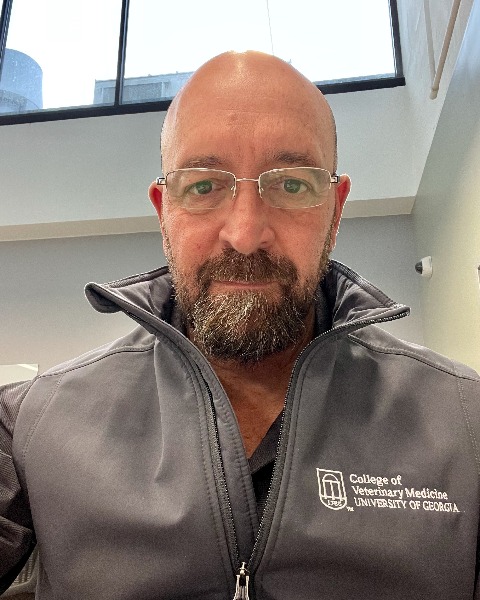Large Animal
Complications in Large Animal Surgery
Complications in Laparoscopy and Thoracoscopy
Friday, October 24, 2025
2:00 PM - 2:30 PM
Location: Ballroom 6A

John Peroni, DVM, MS, DACVS (Large Animal) (he/him/his)
Professor of Surgery
University of Georgia
ATHENS, Georgia
Speaker(s)
Minimally invasive techniques such as thoracoscopy and laparoscopy have revolutionized both diagnostic and therapeutic approaches in human and veterinary medicine, offering significant benefits including reduced postoperative pain, shorter recovery times, and improved visualization. However, like any surgical procedure, they are not without risks. This presentation will provide an overview of the potential complications associated with thoracoscopy and laparoscopy, highlighting both common and rare adverse events, their underlying causes, and strategies for prevention and management to enhance patient outcomes and surgical safety.
Although thoracoscopy and laparoscopy are generally considered safe and less invasive than traditional open surgeries, they are not without risks. One of the most frequent complications is bleeding, which can result from vascular injury during trocar insertion or tissue dissection and may necessitate conversion to an open procedure. Infection remains a concern, with surgical site infections and postoperative pneumonia—particularly in thoracoscopy—being notable. Organ injury is another significant risk, as accidental trauma to the lungs, liver, intestines, diaphragm, or other internal structures can occur due to limited tactile feedback and reliance on visualization. Subcutaneous emphysema, a common complication in laparoscopy, arises from the insufflation of carbon dioxide and typically resolves on its own, although it can cause transient discomfort and concern. Thoracoscopy carries the additional risk of pneumothorax or pneumomediastinum due to unintended air leakage, which may compromise respiratory function and require chest tube placement. Anesthesia-related complications, including cardiopulmonary instability, can also occur, especially in patients with pre-existing conditions or when procedures are prolonged.
Although thoracoscopy and laparoscopy are generally considered safe and less invasive than traditional open surgeries, they are not without risks. One of the most frequent complications is bleeding, which can result from vascular injury during trocar insertion or tissue dissection and may necessitate conversion to an open procedure. Infection remains a concern, with surgical site infections and postoperative pneumonia—particularly in thoracoscopy—being notable. Organ injury is another significant risk, as accidental trauma to the lungs, liver, intestines, diaphragm, or other internal structures can occur due to limited tactile feedback and reliance on visualization. Subcutaneous emphysema, a common complication in laparoscopy, arises from the insufflation of carbon dioxide and typically resolves on its own, although it can cause transient discomfort and concern. Thoracoscopy carries the additional risk of pneumothorax or pneumomediastinum due to unintended air leakage, which may compromise respiratory function and require chest tube placement. Anesthesia-related complications, including cardiopulmonary instability, can also occur, especially in patients with pre-existing conditions or when procedures are prolonged.

